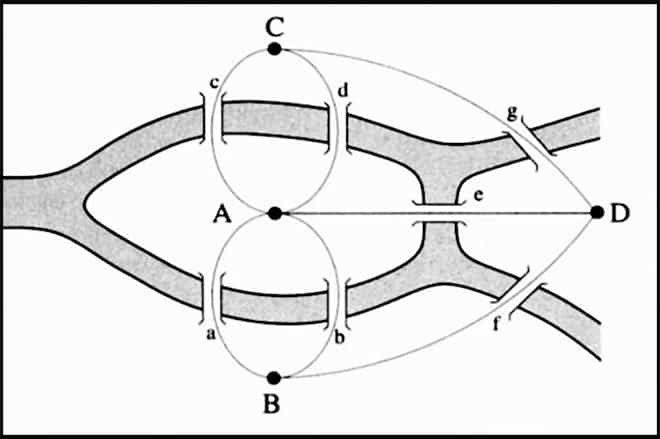History of Network Science
Network science is the product of diverse research communities. It began in 1735 with Leonhard Euler’s solution to the Seven Bridges of Königsberg problem. Euler’s solution reduced the problem to a mathematical model that could be analyzed. This framework founded the mathematical field of graph theory.
In the 1930s, the sociologists J. L. Moreno and H. H. Jennings laid the foundations of what we now call social network analysis, the use of network science to investigate social structures.
In the 1950s, Paul Erdős founded the field of random graph theory by defining simple processes for generating networks randomly and studying their properties.
In the late 1990s, statistical physicists made great advances in network science. They sought a unifying theory for network phenomena, whether the networks arose from the social connections of people, the physical connections of internet devices, or the biological interactions of proteins. For example, the Barabási-Albert preferential attachment model explains why networks often develop a few nodes with many connections and many nodes with few.

